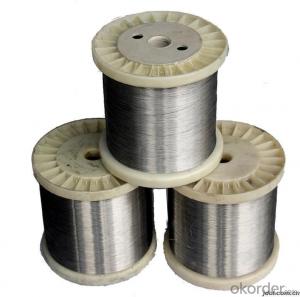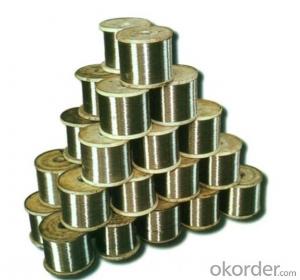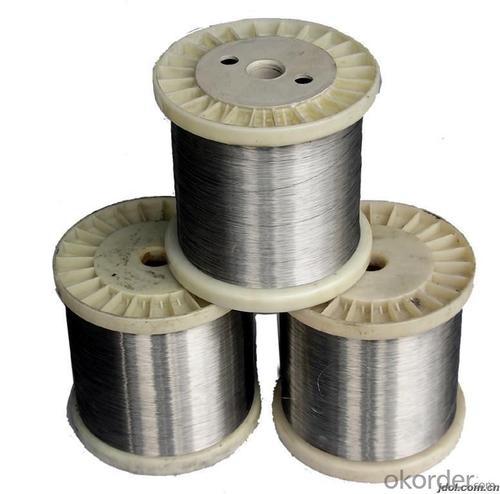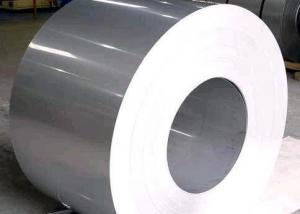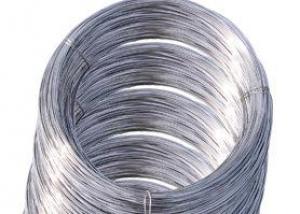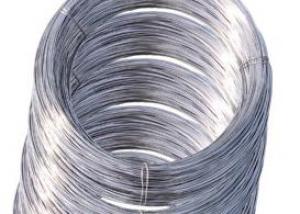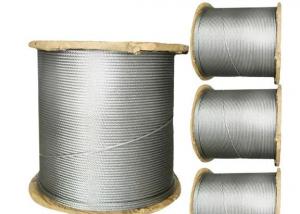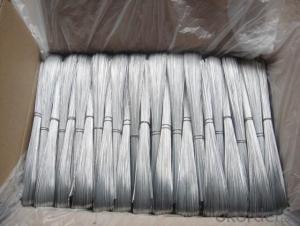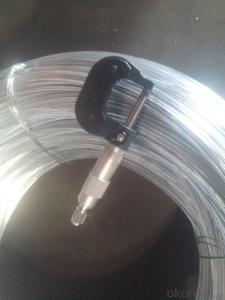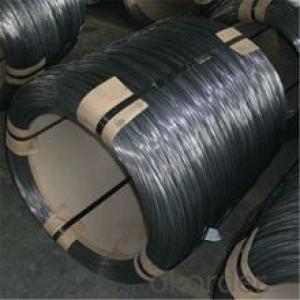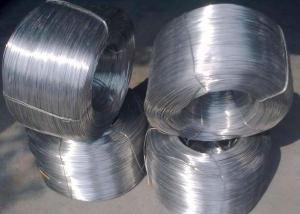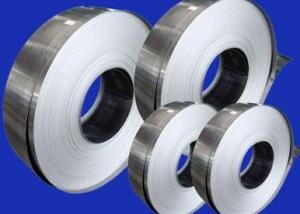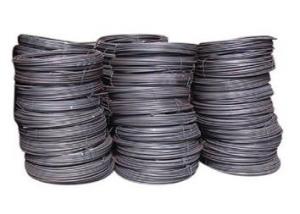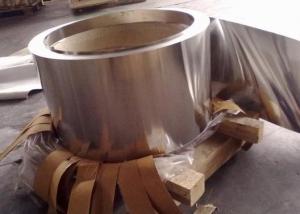stainless steel wire rope for building industry
- Loading Port:
- Qingdao
- Payment Terms:
- TT OR LC
- Min Order Qty:
- 1 m.t.
- Supply Capability:
- 1000 m.t./month
OKorder Service Pledge
Quality Product, Order Online Tracking, Timely Delivery
OKorder Financial Service
Credit Rating, Credit Services, Credit Purchasing
You Might Also Like
hot selling 8x19 stainless steel wire rope
1:Description
| Product Detail | |
| Wire diameter | 0.03mm-2.0mm |
| Grade | 200 series,300 series,400 series |
| Standard | ASTM,EN. DIN,JIS |
| Surface | Bright,Cloudy,Plain, Black, as your request |
| Type | Spring, Welded,Tig,Migetc soft and hard |
| Tensile Strength | 630N/mm2 —900N/mm2 |
| Production Process |
|
| Packing | Plastic film inside and woven bag or hession cloth outside ,25kg/50kg each coil ,25ton/20'' FCL |
| Features |
|
- Q: 8m201 stainless steel expansion screw or galvanized iron expansion screw?
- Stainless steel expansion screw or galvanized iron expansion screw? Fastener consultant Yu Wenlong believes that if it is definitely beautiful from the stainless steel expansion screw, stainless steel expansion screw is not easy to rust; if the price considerations, of course is galvanized iron expansion screws cheap. Stainless steel expansion screws and galvanized iron expansion screws are almost the same strength. Fastener consultant Yu Wenlong think stainless steel expansion screw is good or galvanized iron expansion screw is relatively good, according to the actual situation to consider.
- Q: Is stainless steel wire resistant to heat and fire?
- Stainless steel wire possesses an exceptional ability to withstand heat and fire. This material, known for its durability and versatility, displays remarkable heat resistance characteristics. With a melting point reaching approximately 1375 to 1400 degrees Celsius (2500 to 2550 degrees Fahrenheit), stainless steel wire exhibits an outstanding capacity to resist heat and fire. Moreover, it does not easily ignite or support combustion, rendering it an ideal option for situations that involve high temperatures or fire risks. Due to its remarkable heat and fire resistance properties, stainless steel wire finds extensive application in industries like construction, electrical, automotive, and aerospace.
- Q: Can stainless steel wire be used for filtration purposes?
- Yes, stainless steel wire can be used for filtration purposes. It is commonly used in applications requiring high strength and resistance to corrosion, making it suitable for filtering liquids and gases in various industries such as pharmaceutical, food processing, and wastewater treatment. The wire's durability and ability to withstand high temperatures and pressure make it an effective choice for filtration systems.
- Q: M5 stainless steel screws are broken in the hole. They can not be drilled and punched by guns. How can I remove them?
- Find a fine punching head, point grinding, punching in broken wire intermediate proofing, the deeper the higher success rate, hit the red point deep, hand twist so small thickness of the flat shovel scour repair like 6 arris, finally in six the wrench screw up.
- Q: What are the different types of stainless steel wire rope coatings available?
- There are several types of coatings available for stainless steel wire ropes, including galvanized, nylon, PVC, and polyurethane. These coatings provide varying levels of protection against corrosion, abrasion, and environmental factors.
- Q: What are the different types of stainless steel wire ropes used in cranes?
- There are several types of stainless steel wire ropes commonly used in cranes, including 1x19 construction ropes, 7x19 construction ropes, and 7x7 construction ropes. These wire ropes vary in their construction and number of strands, offering different strengths and flexibility to meet the specific requirements of various crane applications.
- Q: What does stainless steel wire drawing mean?
- No fingerprint drawing generally refers to drawing the oil mill, because the surface has a layer of oil film so as to dry grinding than the general resistance of fingerprints, now there is a drawing in inorganic film plated with one layer and the steel substrate to form molecules
- Q: Can stainless steel wire be used in marine environments?
- Yes, stainless steel wire can be used in marine environments. Stainless steel is highly resistant to corrosion and rust, making it an ideal choice for applications in marine environments where the wire will be exposed to saltwater, high humidity, and other harsh conditions. The chromium content in stainless steel forms a protective layer on its surface, preventing corrosion and ensuring the wire's durability and longevity. Additionally, stainless steel wire has excellent strength and flexibility, making it suitable for various marine applications such as rigging, fishing, boat building, and marine construction.
- Q: What are the different types of stainless steel wire springs used in the construction industry?
- In the construction industry, there are various types of stainless steel wire springs that serve different purposes. Here are some of the most common types used: 1. Compression Springs: These springs are designed to resist compressive forces and are commonly used in applications where there is a need to absorb or store energy, such as in doors, windows, and mechanical equipment. 2. Torsion Springs: Torsion springs are used to apply torque or rotational force and are often found in applications such as garage doors, hinges, and suspension systems. They are designed to store and release energy when twisted or rotated. 3. Extension Springs: Extension springs are used to absorb and store energy when they are stretched or extended. They are commonly found in applications such as trampolines, garage doors, and industrial equipment. 4. Wire Forms: Wire forms are springs that do not fit into the traditional spring categories. They are custom-made shapes or configurations designed to perform specific functions, such as hooks, clips, or brackets. These wire forms are widely used in the construction industry for various purposes, including fastening and supporting components. 5. Flat Springs: Flat springs, also known as clock springs, are thin, flat strips of stainless steel that are wound in a spiral shape. They are commonly used in applications where a constant force or torque is required, such as in clocks, measuring devices, and automotive components. Each type of stainless steel wire spring has its own unique properties and applications. The selection of the appropriate spring type depends on factors such as the specific function, load requirements, space limitations, and environmental conditions. Consulting with a professional or an engineer can help determine the most suitable stainless steel wire spring for a specific construction project.
Send your message to us
stainless steel wire rope for building industry
- Loading Port:
- Qingdao
- Payment Terms:
- TT OR LC
- Min Order Qty:
- 1 m.t.
- Supply Capability:
- 1000 m.t./month
OKorder Service Pledge
Quality Product, Order Online Tracking, Timely Delivery
OKorder Financial Service
Credit Rating, Credit Services, Credit Purchasing
Similar products
Hot products
Hot Searches
Related keywords
